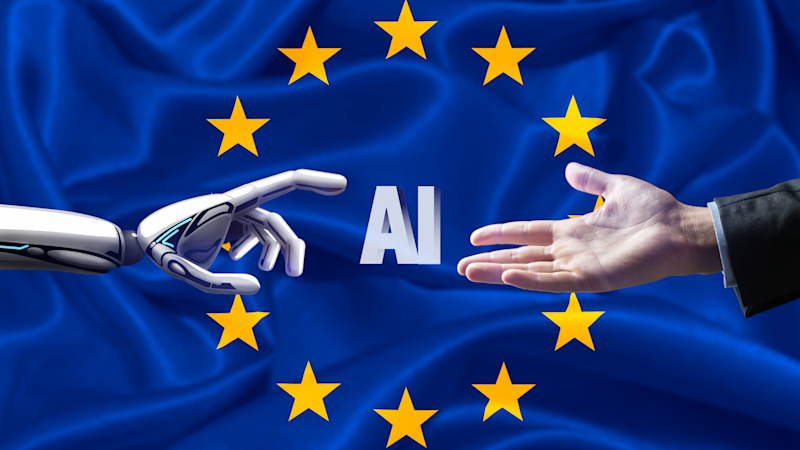At Leexi, we are committed to the responsible and ethical development of AI for our customers.
- The EU AI Act: guaranteeing the ethical use of artificial intelligence in Europe
- What can we expect when the European AI law comes into force ?

The EU AI Act: a historic new regulation for artificial intelligence
In 2022, ChatGPT made its grand entrance into Europe. Since its launch, no one can deny it: artificial intelligence is a true revolution, in both the professional and personal spheres. AI is opening up a field of possibilities that has yet to be fully exploited, but its use raises numerous ethical questions and concerns about privacy and security. In response to these challenges, the European Union (EU) has adopted landmark legislation: the EU AI Act.
At Leexi, we are committed to the ethical use of AI: discover Leexi for free
Why regulate the use of AI?
Faced with the concerns raised by the arrival of artificial intelligence in Europe, the EU began discussing a draft law on AI to regulate its use on the European market. The main aim of this act is to ensure that AI is used in an ethical manner that respects fundamental human rights. This new regulation aims to create a clear and coherent legal framework to promote innovation while protecting the interests of European citizens.
What exactly is the EU AI Act?
The EU AI Act has a clear objective: to ensure the human-centred and ethical development of artificial intelligence in the European Union. To achieve this, the EU is introducing a common regulatory and legal framework to ensure the ethical use of AI on the European market.
In concrete terms, the regulatory framework of the EU AI Act is based on a classification of AI into four levels of risk, with each level having a different degree of regulation.

Minimal risk
This covers the majority of programmes such as video games. They do not require any intervention.
Limited risk
It includes deep fakes, chatbots, etc. Users need to know that they are dealing with an AI.
High risk
This means that AI is used in sectors such as education, transport, law, security, etc. The risks they represent are rigorously assessed and these programmes must comply with certain criteria. Unacceptable risk: this refers to AI systems such as social scoring.
In practical terms
1. Ban on dangerous and unethical practices
First, the EU AI Act prohibits certain dangerous and unethical practices, such as the manipulation of human behaviour, automated social scoring and AI systems that deceive users into thinking they are interacting with another human being. These practices are considered incompatible with European values and are therefore strictly prohibited.
2. Risk-based classification of AI systems
The EU AI Act proposes a risk-based approach for AI systems deemed to be high-risk. These systems, such as real-time facial recognition technologies and AI-based medical devices, are subject to additional requirements to ensure their safety and reliability. AI developers will have to comply with strict transparency, traceability and accountability requirements. They will also have to carry out risk assessments to identify and mitigate potential discrimination and security flaws.
An AI regulatory authority will be created to ensure that the EU AI Act is applied. This authority will have the power to supervise the compliance of companies operating in the EU, impose penalties for non-compliance and provide guidance and advice on how to comply with the regulations.
The chronology of the EU AI Act shows that this legislative process had been underway for several years. Public consultations were held to gather the views of stakeholders, including researchers, businesses and human rights groups. A broad consensus emerged on the need to regulate AI to protect the rights and interests of European citizens.
The adoption of the EU AI Act by the European Parliament is a historic step in the regulation of artificial intelligence in Europe. This legislation aims to strike a balance between innovation and the protection of fundamental rights, ensuring that AI is used responsibly and ethically.
It is important to note that the EU AI Act does not aim to ban or curb the use of AI, but rather to establish rules to ensure its safe and ethical use. AI has the potential to transform our society in a positive way, but this must be done responsibly, taking into account ethical principles and fundamental rights.
At Leexi, we are committed to the responsible and ethical development of AI for our customers.
In conclusion
The adoption of the EU AI Act is an important step in the regulation of artificial intelligence in Europe. This legislation aims to ensure that the use of artificial intelligence is ethical and respects fundamental human rights.
Ready to boost your productivity with Leexi?
Leexi AI Notetaker takes notes for you